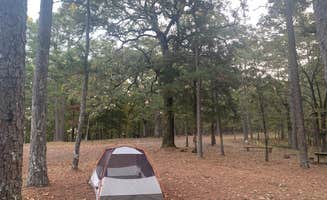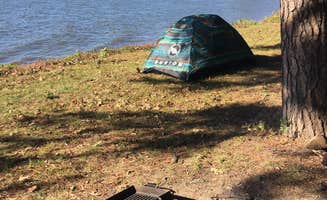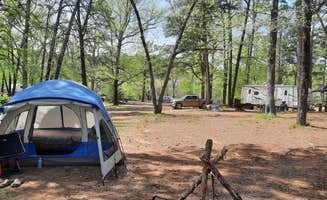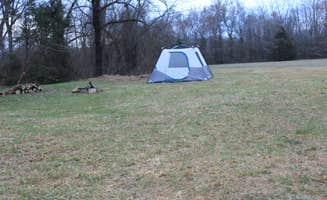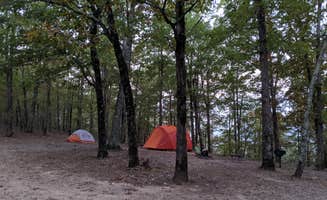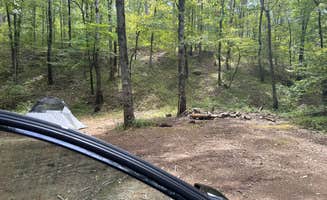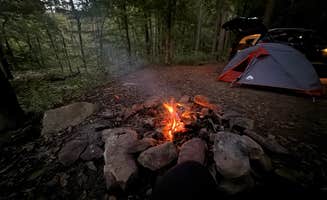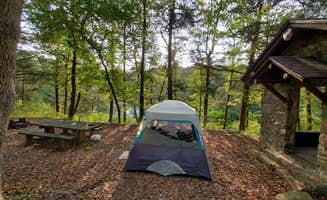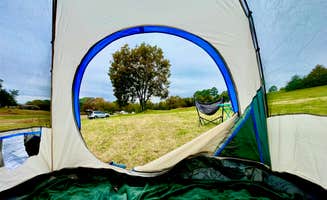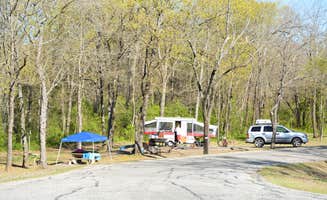The Ozark and Ouachita National Forests surrounding Havana, Arkansas sit at elevations ranging from 600 to 2,700 feet, creating diverse camping microclimates throughout the region. Weather patterns can change rapidly, with summer temperatures averaging 85-95°F during day and dropping to 65-75°F at night. The terrain features a mix of hardwood forests, pine stands, and exposed rocky outcroppings that influence tent placement and gear requirements.
What to do
Kayaking access points: Irons Fork Primitive Camping offers direct water access for paddlers. "Great for kayaking. Fairly level. No garbage/dumpster on site. Some sketchy pit toilets," notes camper Stephanie P. This area provides multiple launch points with shaded parking nearby.
Swimming options: Haw Creek Falls Camping features natural swimming areas with varying depths. "Swimming area is fantastic, a much needed relief after a hot day of hiking!" writes Samantha W. Water levels fluctuate seasonally, making late spring and early summer optimal for swimming.
OHV trail exploration: The Mount Magazine Wildlife Management Area contains designated off-highway vehicle routes. Forest Road 96022B serves as a junction point for multiple trails. Camping near these access points allows for easy day trips without relocating your base camp. Trail difficulty ranges from beginner to advanced with terrain varying from gravel roads to technical rock sections.
What campers like
Ridge views: Hickory Nut Mountain sits high above Lake Ouachita with partial lake visibility through tree gaps. "You get a view of the lake from the trees and at night you're surrounded by 'lightning bugs'. Which makes the experience a little enchanting," shares camper Chrischelle N. Most elevated tent sites require careful placement due to rocky terrain.
Quick overnight options: Fourche Mountain Campground serves as a convenient stopover when traveling through the region. "Perfect place to stop for a night on a roadtrip. It's right off the road but up a hill so you can't be seen," notes Alex B. Sites accommodate standard tent footprints with minimal preparation needed.
Creek proximity: Multiple camping areas feature water access points within walking distance of tent sites. This proximity allows for filtering drinking water rather than carrying full supplies. Seasonal flow varies dramatically, with some creeks drying completely by late summer. Most creek beds consist of small stones and gravel, creating natural paths and exploration opportunities.
What you should know
Road access limitations: Getting to prime tent camping near Havana requires navigating unpaved roads of varying quality. Some forest roads become impassable after heavy rain, particularly those at lower elevations. High-clearance vehicles provide greater flexibility for reaching remote sites.
Wildlife encounters: The region hosts diverse animal populations including deer, wild turkey, coyotes, and snakes. "We could hear coyotes going crazy trying to get to a cow. The farm dog wasn't having it and kept them away during the night," reports Olivia M. about camping at Delaware Park.
Cell service variability: Coverage ranges from nonexistent to surprisingly strong depending on elevation and carrier. "No cell service or wifi. Had to walk to the dam to get it, but that can be a good thing when camping," notes Jack W. about Carter Cove. AT&T and T-Mobile generally provide better coverage than other carriers throughout the region.
Tips for camping with families
Beginner-friendly locations: Jack Creek Recreation Area provides amenities suitable for children with minimal hiking required. "It's small and very popular with the locals. Off season it's relatively quiet," shares Shelia H. Sites remain close enough to facilities while maintaining a natural setting.
Water safety planning: Many campsites near Havana sit adjacent to water features with varying currents and depths. Sites near Haw Creek Falls require particular attention as water levels can change rapidly. "When it rains a lot, the creek floods and covers the road into the campground," warns Lacee G.
Bug preparation: The humid climate supports substantial insect populations, particularly during warmer months. Ticks, mosquitoes, and chiggers appear consistently from April through October. Treating tent sites and surrounding areas with permethrin before setup significantly reduces encounters.
Tips from RVers
Size limitations: Most campgrounds near Havana accommodate smaller recreational vehicles but present challenges for larger rigs. "The sites are small with reasonable separation, but no privacy. Sites may be able to accommodate a truck camper & smaller," notes Fred S. about Fourche Mountain Campground. Specific measurements for turning radii and parking pads aren't typically posted.
Leveling requirements: Natural terrain throughout the region creates uneven parking surfaces at most primitive sites. Many campers report needing leveling blocks even at designated camping areas. Rocky surfaces can complicate stabilizer placement and increase setup time.
Water planning: With limited water hookups available, RVers must plan accordingly. "NO drinking water at the time of my visit," reports Fred S. about South Fourche campground. Most established sites require self-sufficiency with water tanks.


